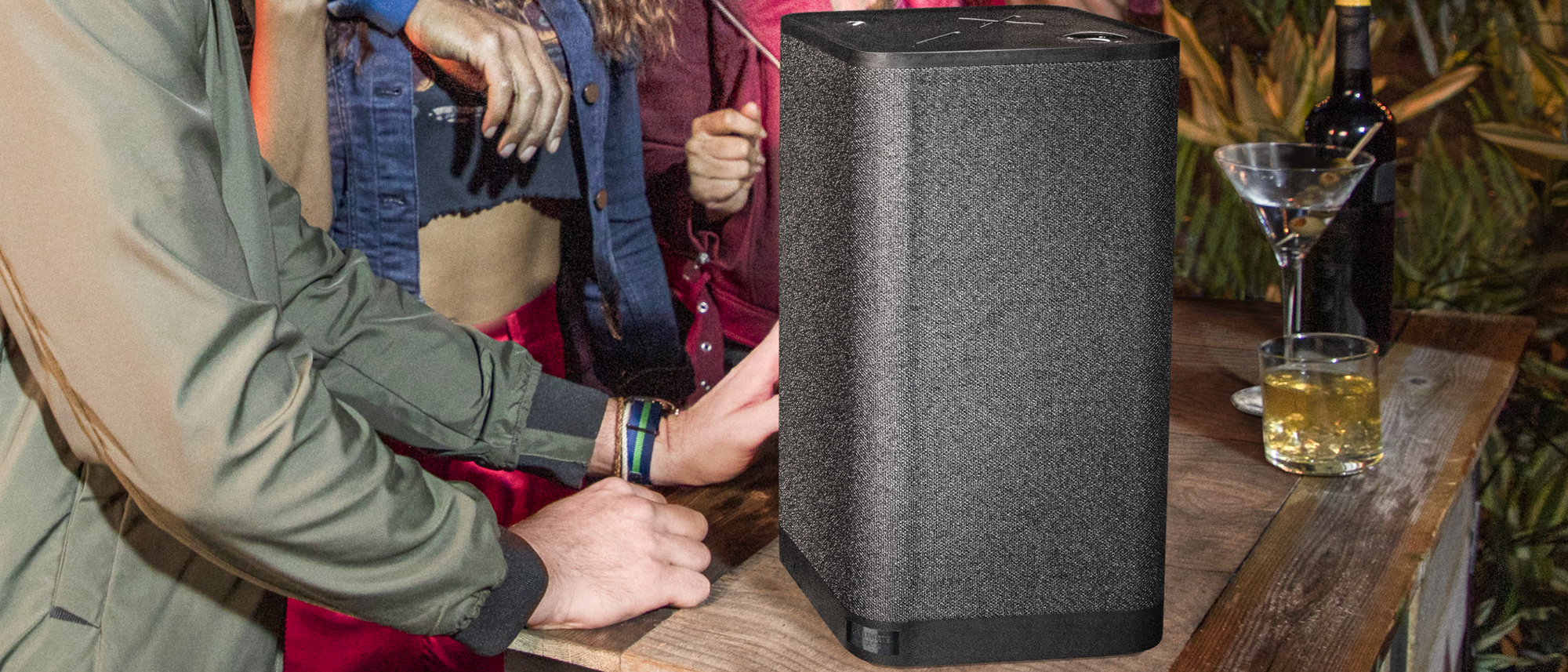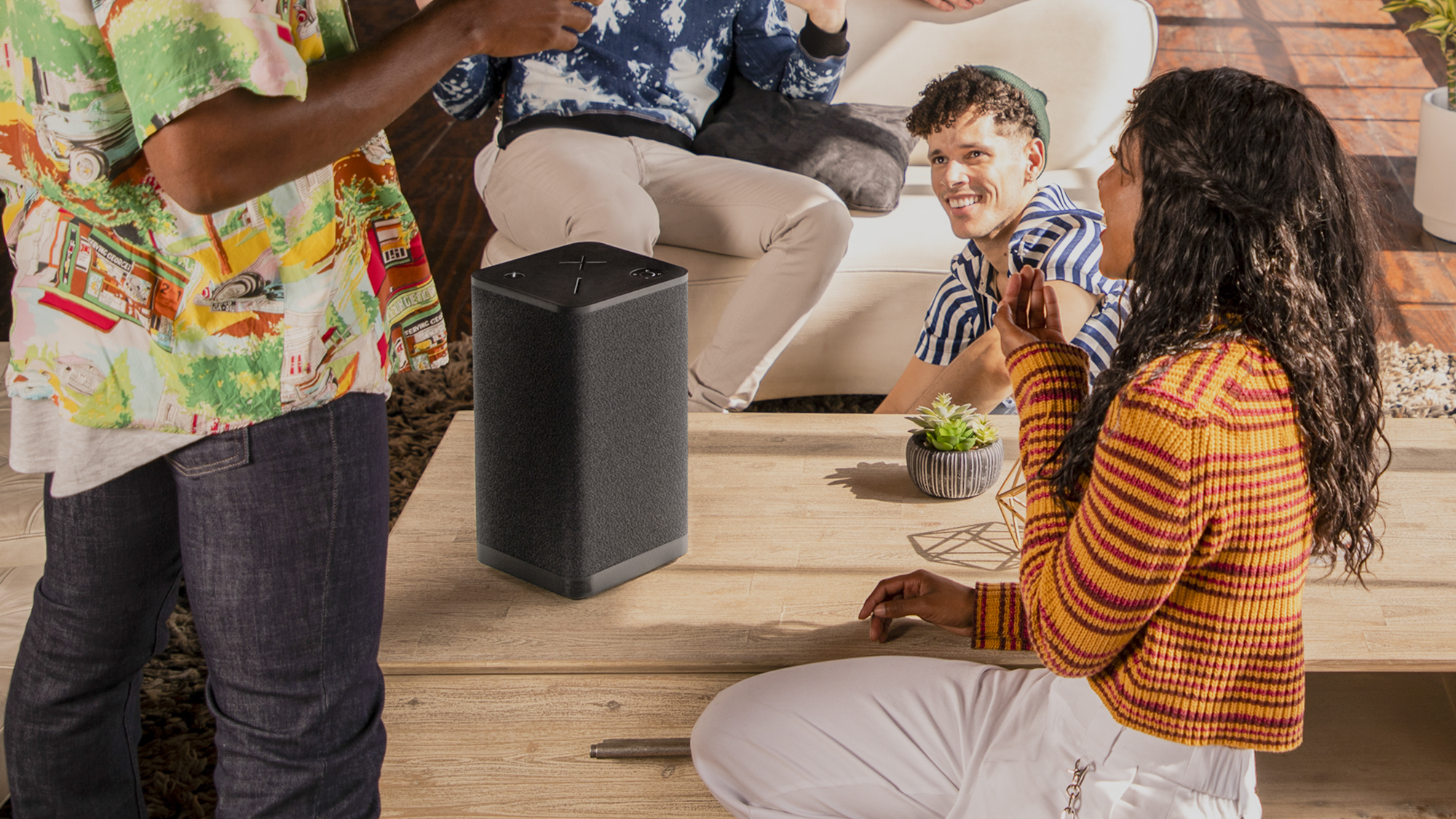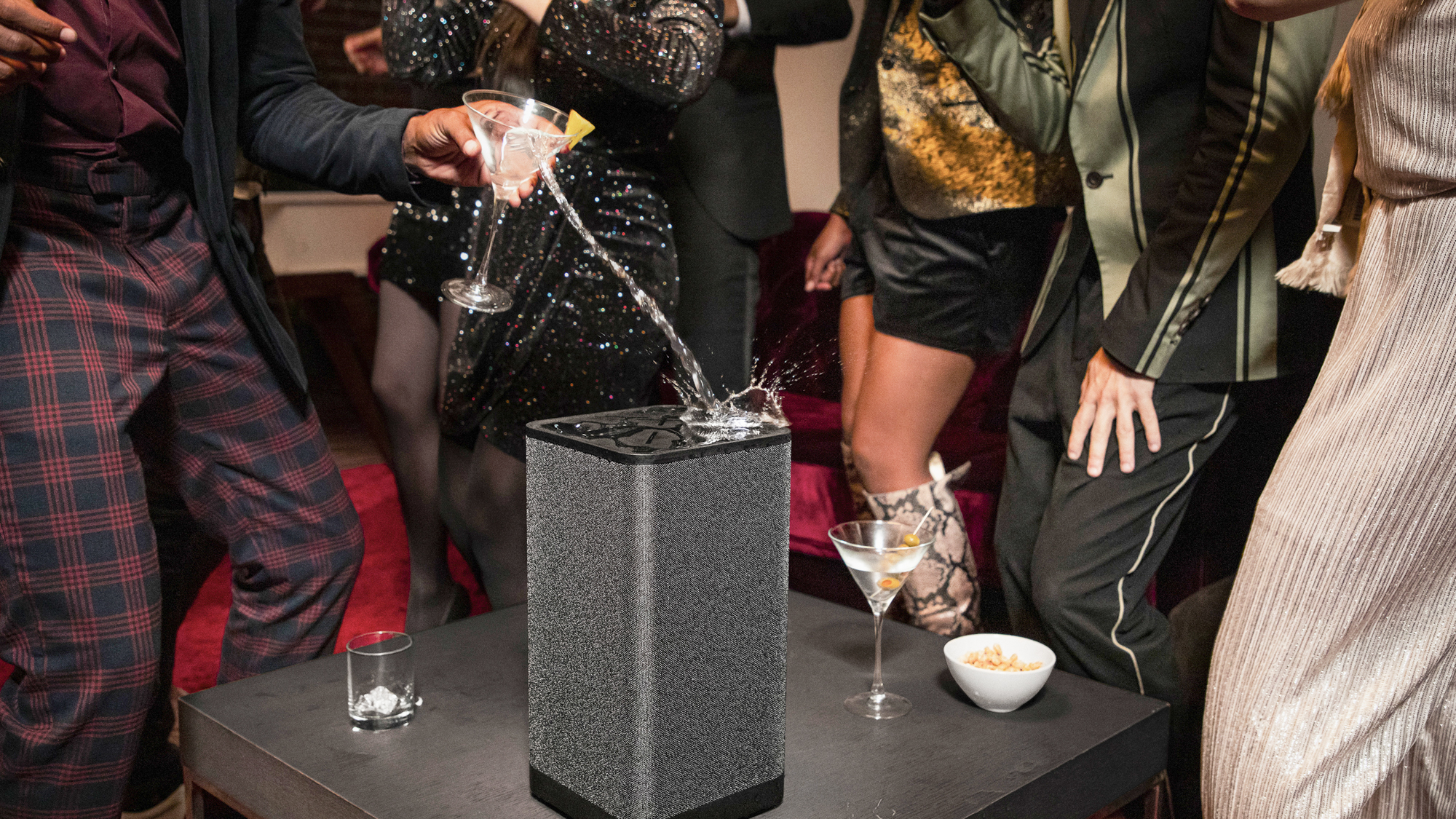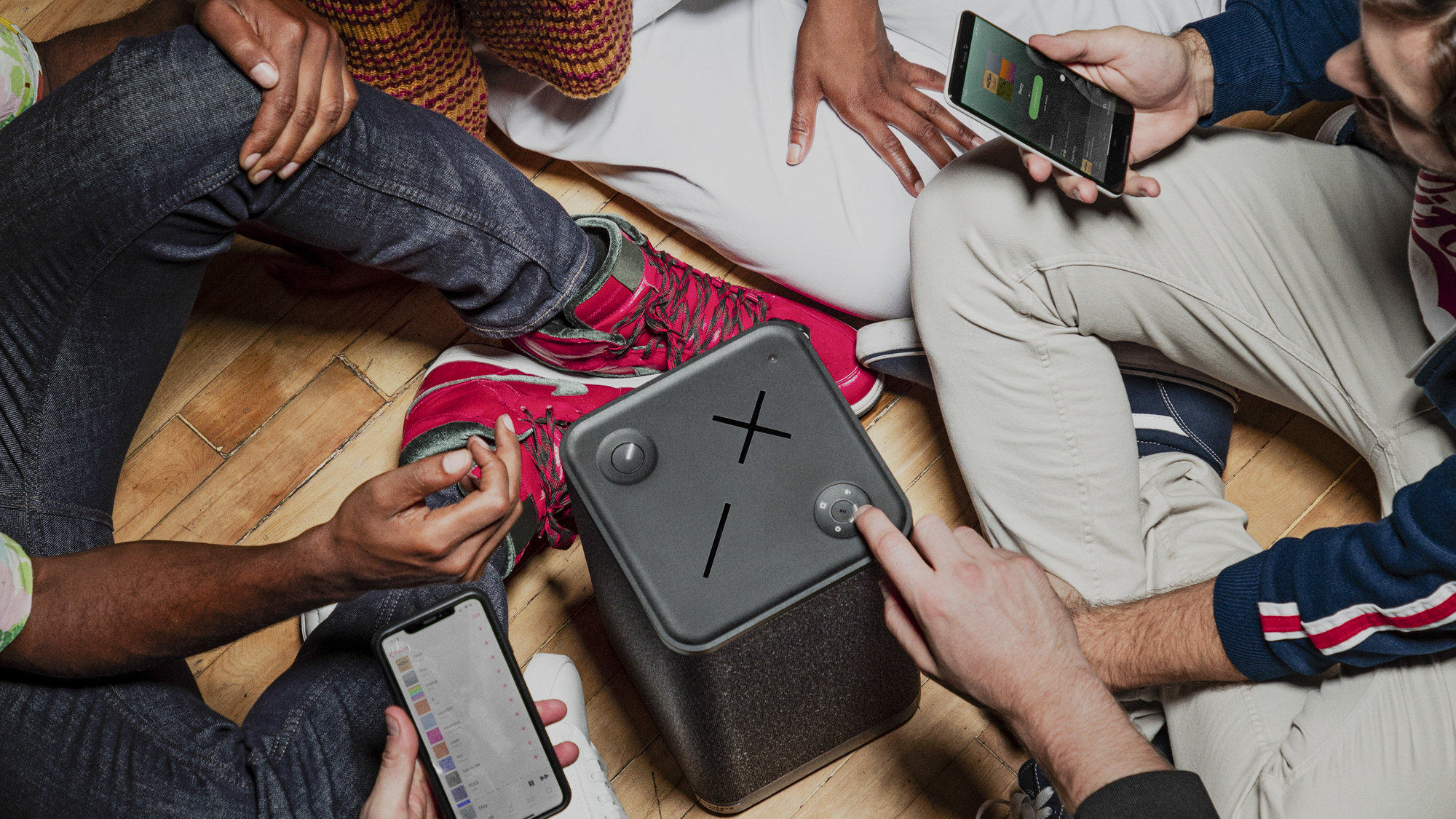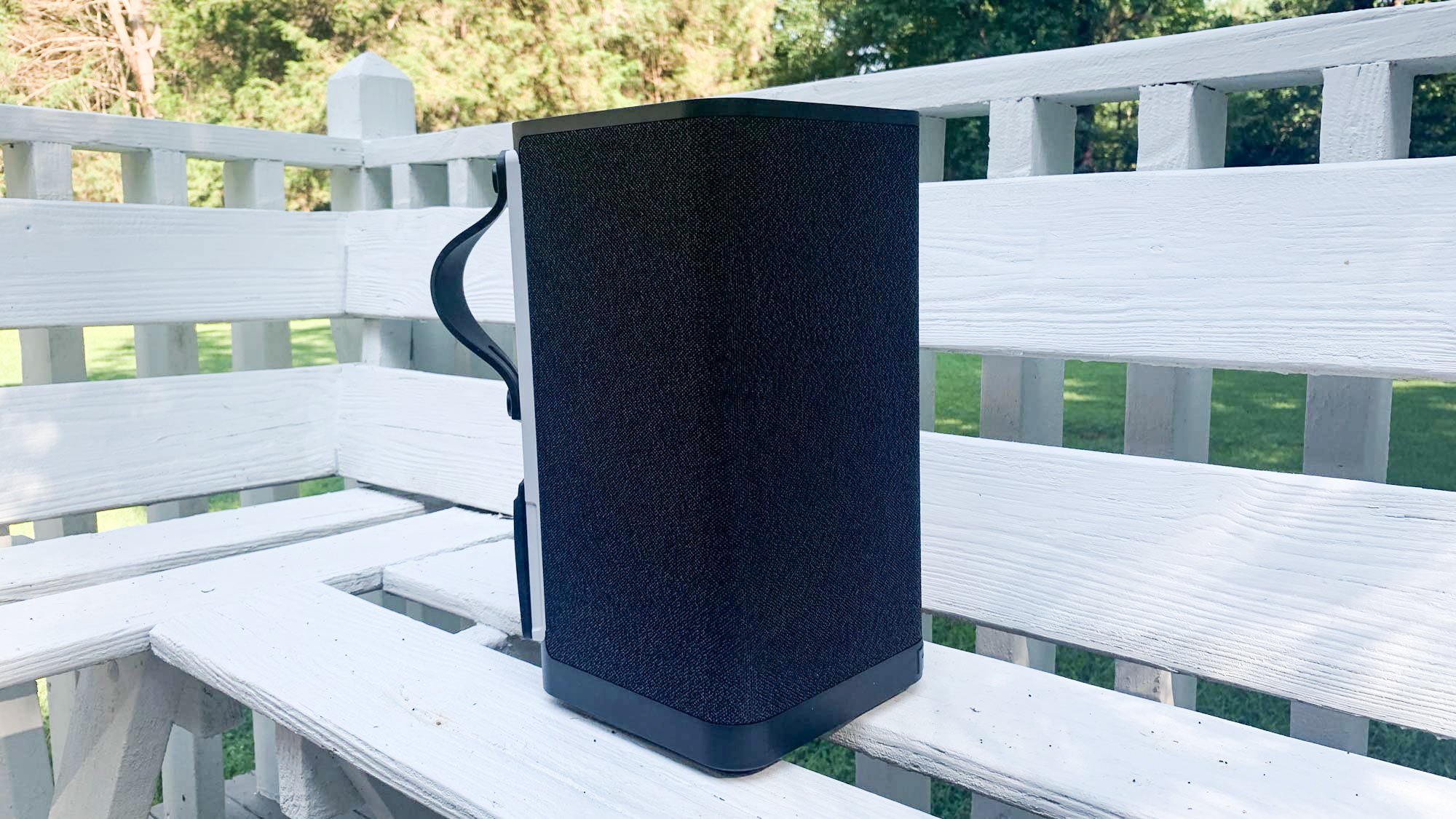Tom's Guide Verdict
Ultimate Ears Hyperboom portable Bluetooth speaker is a big speaker that produces a big sound — at a big price.
Pros
- +
Big and balanced sound
- +
Gets very loud
- +
Good battery life
Cons
- -
Pricey
- -
Really, really big and heavy
- -
No voice assistant
Why you can trust Tom's Guide
As the biggest entry in Ultimate Ears’ Bluetooth speaker lineup, the UE Hyperboom stretches the definition of portable. But what you give up in ease of movement, you gain in sound quality, to the point that this is one of the best Bluetooth speakers around.
The Hyperboom is one of several large portable Bluetooth speakers that have come out in the past few months, and it’s the best of the lot. With big speakers come big price tags, but if you want excellent sound on the go, you don’t mind lugging it around, it could still be a worthwhile investment. Read on for our full UE Hyperboom review.
- Check out the best outdoor speakers
- Our picks for the best soundbars to buy
UE Hyperboom review: Design
How big is the Hyperboom? At 14.3 x 7.5 x 7.5 inches, you could fit about 18 Ultimate Ears Boom 3 speakers in its case. It’s the kind of speaker that when you bring it out at a party, someone is going to say, “That’s a really big speaker.” But it’s not much bigger than other large portables, like the 13.8 x 9 x 6.4-inch Marshall Tufton.
The hard black plastic enclosure suggests the Hyperboom will withstand the rigors of outdoor living. Inside, Ultimate Ears put two 4.5-inch woofers, two 1-inch tweeters and two 3.5 x 7.5-inch passive radiators, surrounded by black mesh fabric. That’s making the most of the speaker’s large footprint.
It weighs a hefty 13 pounds — 3 pounds more than the Marshall Tufton. That makes the rubber strap built in to the side essential for moving it around. Below the strap, there’s a flap that protects the power connection (not USB; it comes with its own power brick) and inputs for 3.5mm auxiliary and digital optical audio — a rarity on a portable Bluetooth speaker. There’s also a USB port to charge other devices.
On top, the speaker has a large power button, a selector for the inputs and “magic” button for playing or pausing music, as well as playing preselected playlists. There’s also touch-sensitive volume controls. I found the volume controls to be too sensitive — a few times I inadvertently changed the volume. For example, when I set a can on top of the speaker, it cranked the volume.
UE Hyperboom review: Performance
The Hyperboom is one of the best sounding portable speakers available. It has a huge sound, spreading audio widely. It has plenty of power to be heard above the chatter of a BBQ. Its big bass is balanced nicely with treble and midrange — something the Marshall Tufton lacked. Only the Sonos Move, with slightly better bass and vocal performance, beats it in sound quality for portable speakers,
Get instant access to breaking news, the hottest reviews, great deals and helpful tips.
You’ll hear excellent details in the music, which many portables can’t match. The complex layers of sound on Fiona Apple’s “Shameika” were each distinct, while Apple’s vocals were clear above the chaos. Taylor Swift’s voice was bright and full on “the last great american dynasty,” and the bass thumped tightly. The strummed guitars on Jason Isbell’s “What’ve I Done to Help” were crisp, as was the snare drum driving the beat.
Big doesn’t just describe its size. The Hyperboom is one of the loudest portable speakers I’ve ever tested. It pushed 98 decibels at max volume, and didn’t get distorted even when cranked. Not that I, or your audiologist, would recommend you listen at that volume, but it’s nice to know you have that power in reserve when you need it.
UE Hyperboom review: Ruggedness
The Hyperboom offers a IPX4 water resistance rating, meaning it can withstand being splashed with water, but it shouldn’t be dunked in the pool. It withstood a spray from a hose without any adverse effects. The Tufton only has an IPX2 rating. Other Ultimate Ears speakers, like the Boom and Megaboom, can be submerged.
UE Hyperboom: Battery
With 24 hours of battery life, the Hyperboom should last longer than you — or your phone. Ultimate Ear’s rating seems accurate; after about 12 hours of use at a variety of volumes, the Hyperboom had 50 percent of its battery left. By comparison, the Tufton is rated for 20 hours on a full charge.
UE Hyperboom review: Wireless and Setup
The Hyperboom connects to your phone, tablet or computer via Bluetooth; unlike some speakers in this price range, it doesn’t do Wi-Fi. You can connect two devices at the same time if you want to switch between wireless sources. Ultimate Ears says it has a range of 150 feet; in testing, It had a strong signal at more than 100 feet away indoors.
You adjust the settings through the Ultimate Ears Boom app, one of the best apps available for Bluetooth speakers. You can choose from three presets equalizer settings: Bass Boost, Game/Cinema or Podcast. You can also manually adjust the EQ with its visual equalizer. But the best sound came using its Adaptive EQ setting, which uses a microphone on the speaker to adjust the sound based on the environment you’re listening to. This is similar to a feature on the Sonos Move.
The app also lets you pair with other Boom speakers — the Boom and Megaboom, but not the Wonderboom — so you can spread the sound even wider and listen to the same music in multiple rooms. You can also pick a playlist to start by pushing the magic button on the top of the speaker and set up an alarm.
UE Hyperboom review: Verdict
The Ultimate Ears Hyperboom is big and produces beautiful sound for a portable Bluetooth speaker. It belts out the bass and delivers full vocals, all nicely balanced. While it’s weight and size makes it less portable than what usually comes to mind — like the Ultimate Ears Boom 3 — it has good battery life, decent water resistance and a convenient handle so you can take it with you.
For the same price you can get the Sonos Move, which sounds slightly better and is definitely smaller (though not small). But the Move isn’t as loud and only has 11 hours of battery life.
Whether the Hyperboom is the right portable Bluetooth speaker for you depends on how you plan to use it — and if you can afford it. Because of its sound quality, the Hyperboom is perfect for being a main speaker in your kitchen or living room and you can move it around with you as needed. But if you need something that’s light and easy to stash, the Hyperboom isn’t for you.

Michael Gowan is a freelance technology journalist covering soundbars, TVs, and wireless speakers of all kinds of shapes and sizes for Tom’s Guide. He has written hundreds of product reviews, focusing on sound quality and value to help shoppers make informed buying decisions. Micheal has written about music and consumer technology for more than 25 years. His work has appeared in publications including CNN, Wired, Men’s Journal, PC World and Macworld. When Michael’s not reviewing speakers, he’s probably listening to one anyway.
